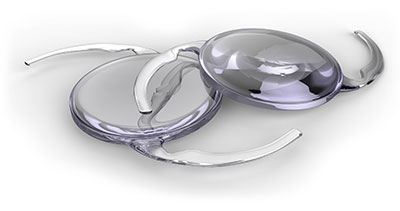Cataract
Treatment
Cataract is a blurring of the eye lens. The cause is usually an age-related aging of the eye lens. This lens then increases in thickness (due to moisture absorption) and becomes cloudy, causing the strength to change (other refraction of the incident light) and the vision to become blurred.
Other causes that can lead to cataracts include hereditary predisposition, certain diseases (e.g. diabetes), eye injuries and long-term medication (e.g. Cortisone).
Treating Cataract
The treatment is an operation in which the lens is removed by means of phaco-emulsification (ultrasound). This involves making a small incision in the cornea. The lens capsule, or the bag in which the lens is located, is retained to insert the new artificial lens so that it is in the same place as the original lens.
The operation is performed under anaesthetic and takes about half an hour. After the operation you can leave the hospital immediately.
Types of Implant Lenses
An implant lens is a round disc made of plastic with an optical part of 6 mm. This is the part through which we look. The total size of the lens is about 13 mm. Because the operation is done through a very small incision, the lens is rolled up and injected into the eye where it unfolds again.
Monofocal Implant Lenses
This is the most commonly chosen lens. Here you can see sharp at one distance; this is usually in the distance, which means that reading glasses are needed to be able to see close-up optimally. Conversely, you can also opt to be able to read without glasses, but then a pair of spectacles will still be necessary to see sharp in the distance.
Monofocal Toric Implant Lenses
With this implant lens you can correct the cylindrical deviation (astigmatism) of the cornea (with this deviation the cornea is not nicely round, but oval in shape). For larger astigmatism, the same reimbursement applies as for a monofocal lens.
Multifocal Implant Lenses
With this type of implant lens you can see both far and near without correction. With multifocal implant lenses, many patients suffer from circular halo’s that appear around light sources in the dark, such as at traffic lights or car headlights. If you want to avoid having to wear glasses as much as possible, this option is often chosen, but one should be aware of the disadvantages that come with this type of lenses.
The choice of implant lens depends on many factors, such as expectations and priorities of the patient, and is always thoroughly discussed with the surgeon.
What is Posterior Capsule Opacity (PCO)?
Posterior Capsule Opacity (PCO) Cataract is a cloudiness of the posterior lens capsule that can occur months to years after cataract surgery. It is the result of remaining cells that cover the back wall of the capsule bag and occurs quite frequently with patients who have undergone cataract surgery.
In order to optimise vision again, the Yag laser is used to make an opening in the lens capsule at the back of the artificial lens. This treatment is fast and painless and is done during a consultation at the eye doctor’s cabinet.




